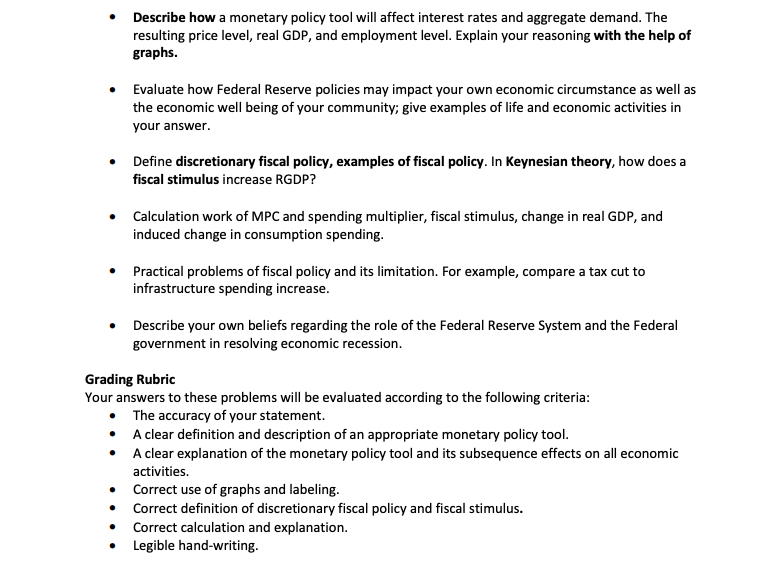A Limited Company Made Credit Sales of 4,00,000 During the Financial Period If the Collection Period is 36 Days and Year is Assumed to Be 360 Days, Calculate: Accountancy


It is used to generate budget projections and preliminary balance sheet figures. This ratio can estimate the number of accounts receivable or other debtors. The average collection period is also referred to as the days’ sales in accounts receivable. In general, businesses prefer a lower average collection period over a higher one as it indicates that receivables can be collected efficiently. It may indicate that the company’s credit terms are too strict, which is a disadvantage.
More often than not, a few of those receivables turn to doubtful debts and, eventually, bad debts, given the risk of non-payment. Because of this, businesses sell goods on credit to regular and reliable customers only to reduce the default risk. The average collection period of a company refers to the average number of days it takes to convert receivables into cash. These companies are likely to experience periods with large receivables and a low turnover ratio, as well as times with fewer receivables that are easier to manage and collect. Hence, an average of opening and closing accounts receivable might inflate or deflate the results.

Most companies allow an average credit period of approximately 30 days to their customers. It can also be due to other reasons such as deliberate delay or default in payments by the customer due to delivery of defective or damaged products by the company and higher sales return. A measure of how often a particular company pays off its debts to suppliers within a given period of time. Ratios are the measurement tools to analysis any company financial as well as non-financial growth. For comparison of company’s performance to similar company’s or industries to understand the position in the market. You understand that more quickly the raw material is converted in cash, lesser the capital requirement for holding huge stocks of raw material.
Building meaningful and long-term relationships with clients can go a long way toward ensuring that they make timely payments. Customers who are happy and satisfied are more likely to pay when asked. The raw material consumption is measured by opening stock of RM plus Purchase of RM minus closing stock of RM. An investor can use accounts Receivable days to check the collection efficiency of the company.
Top Useful Ratios for any Company
So for continuous business operations, the company might have to borrow short-term loans. This puts an extra burden and increases the expenses of the company and thus puts pressure on its Cash from operations. Using this ratio, both employees and lenders may get a clear picture of the business’s financial health. This formula is simply a more concise way of writing the average receivables turnover formula. Activity Ratio – to determine the efficiency of the organization in utilizing its assets for generating revenue.
- You can find it under the ‘current assets’ section in the balance sheet.
- To calculate the accounts receivable turnover ratio , you need to first calculate the net sales and average accounts receivable.
- A corporation’s current assets are listed on its balance sheet as a measure of its liquidity.
- With the right tools at hand, you can master your accounts receivable process and stay on top of your cash flow.
Businesses must be capable of handle their average assortment period so as to guarantee they function smoothly. The ratio also measures how many occasions a company’s receivables are converted to cash in a interval. The receivables turnover ratio could be calculated on an annual, quarterly, or monthly foundation. For an annual common collection interval, the number of working days is about to 365.
High Accounts Receivable Turnover Ratio
Our GST Software helps CAs, tax experts & business to manage returns & invoices in an easy manner. Our Goods & Services Tax course includes tutorial videos, guides and expert assistance to help you in mastering Goods and Services Tax. Clear can also help you in getting your business registered for Goods & Services Tax Law. Sending across a gentle reminder for dues through an email, call or text makes a world of difference to the customers.
How do you calculate debtors collection period?
The debtor collection period ratio is calculated by dividing the amount owed by trade debtors by the annual sales on credit and multiplying by 365.
Khatabook Blogs are meant purely for educational discussion of financial products and services. Khatabook does not make a guarantee that the service will meet your requirements, or that it will be uninterrupted, timely and secure, and that errors, if any, will be corrected. The material and information contained herein is for general information purposes only. Consult a professional before relying on the information to make any legal, financial or business decisions. Khatabook will not be liable for any false, inaccurate or incomplete information present on the website. It measures how efficiently a company using its working capital requirements to support revenue sales and growth.
The company generally provides credit facility to the customers to ease the process of the transaction and establish a strong credit relation. The company has a long credit debtors collection period formula period with its suppliers, which helps it pay its bills on time. Due to the delay in revenue realisation, receivables are formed when a business offers products on credit.
An example of how to calculate the average collection period?
The average collection period, due to this fact, can be 36.5 days—not a foul determine, considering most firms acquire within 30 days. Collecting its receivables in a relatively brief—and affordable—period of time offers the company time to repay its obligations. However, an ongoing evaluation of the outstanding assortment interval instantly impacts the group’s cash flows. The finest method an organization can benefit is by persistently calculating its average collection interval, and utilizing this determine over time to seek for tendencies within its own business. The average collection period may be used to match one company with its competitors, either individually or grouped collectively. Similar firms should produce similar financial metrics, so the common assortment period can be used as a benchmark against one other firm’s efficiency.
What is the collection period of the debtors?
In accounting the term Debtor Collection Period indicates the average time taken to collect trade debts. In other words, a reducing period of time is an indicator of increasing efficiency. It enables the enterprise to compare the real collection period with the granted/theoretical credit period.
The Average stock of RM is measured by opening balance of RM plus Closing stock of RM divided by 2 . A continuous rise in Accounts receivable increases the chances of Short term capital requirement and thus increases the short-term borrowing leading to a high-Interest burden and low profitability. This eventually impacts the bottom line due to the high-Interest burden on the short-term loan so taken and thus decreases the profit of the company. Companies generally sell goods and services to its customer on credit. The assortment period for a particular invoice just isn’t a calculation, however somewhat is simply the amount of time between the sale and the cost of the bill. With the help of this ratio, the employees and the lenders can assess the organisation’s financial position.
Average Debtor Collection Period and How to Calculate It?
The average collection period is often referred to as the Receivables velocity. The average collection period is calculated by multiplying the average accounts receivables by the average net credit sales. The trade receivables turnover ratio is often used in financial modelling to forecast the balance sheet. The accounts receivable balance is calculated from the average time in which revenue is expected to be received. To calculate the AR balance for each period, revenue is multiplied by turnover days and then divided by the number of days.
What is a good debtors collection period ratio?
A shorter average collection period (60 days or less) is generally preferable and means a business has higher liquidity. Average collection period is also used to calculate another liquidity measure, the receivables turnover ratio.
We at Kenstone Capital have redefined the way traditional debt recovery agencies operate. Bring a holistic approach by integrating People , Process and Technology. If we deduct depreciation from GNP the measure of aggregate income that we obtain is called .
You’ll also have to notify your customers before and after you charge them. Offering your customers a variety of payment options, like card payments and bank transfers will get you paid quicker, since your customers can opt for the most convenient payment option. Also, providing online payment options will often get you paid quicker compared to conventional modes of payment. To find out the exact share of the equity share capital, the following formula has to be used. It shows effectiveness of the firm in making use of credit period allowed by the creditors during the moment of credit purchase. CAs, experts and businesses can get GST ready with Clear GST software & certification course.
As a result, while computing the average accounts receivable, the beginning and ending figures should be carefully determined to appropriately reflect the company’s performance. To smooth out any seasonal gaps, investors might use an average of accounts receivable from each month over a 12-month period. The Debtors’ turnover ratio provides insight into a business’s collection and credit strategies.
It’s important for corporations to know their receivables turnover since its instantly tied to how much money they’ll out there to pay their quick time period liabilities. If the company had a 30-day cost coverage for its clients, the average accounts receivable turnover exhibits that on common customers are paying at some point late. Accounts receivables refer to all the customers that owe the business money for goods or services provided by the business. Businesses often offer a credit period to their customers to fulfil the payments conveniently, especially for bulk orders. Since accounts receivables constitute money that is yet to be received , they are shown as assets in the business’s balance sheet.
We should be able to find the necessary accounts receivable numbers on the balance sheet. Once we have the net credit sales figure, the second part of the accounts receivable turnover formula requires the average accounts receivable. You can determine net credit sales from the Income statement or Profit and Loss Account. From the Profit & Loss A/c, you can find the company’s total sales made in a given period. You need to calculate the sales made in credit to the customers and deduct the trade discount, if any, allowed to the customer. A sales return is the value of goods returned by the customers after the sales.

Companies calculate the common assortment interval to ensure they have enough cash available to satisfy their monetary obligations. In other words, this monetary ratio is the common variety of days required to convert receivables into money. The collection period for a selected invoice isn’t a calculation, but somewhat is simply the amount of time between the sale and the cost of the bill. Calculating the average assortment period for a section of time, similar to a month or a 12 months, requires first discovering the receivable turnover, or RT.
In case of factories we calculated seprately for raw material, wip, finished goods. If you’re offering recurring services, then auto-charging is your best option. Storing your customers’ credit card details is an easy way to get paid, since you can charge them right on the due date. All you have to do is inform your customers regarding this policy once you set up the system.
The ratio depicts the time taken by the business to convert its credit transactions to cash. This helps the business plan accordingly to ensure timely a quick turnaround of credit transactions to cash. The ratio shows how long it takes the company to convert credit transactions to cash. This allows the company to plan ahead of time to ensure a speedy turnaround of credit transactions into cash. The holding period of finished goods is dependent on the length of sales cycle i.e. the period of finished goods to be kept in the ware-house before sales.
Based on the ratio revealed, the business may choose to tighten up its existing credit policies to avoid problems such as being cash-strapped or customers defaulting on payments. It shows customers are unable or unwilling to pay for their purchases. These companies are normally unable to convert their sales into cash. It shows the number of days a company takes to collect cash from its credit sales. It shows how well a company is in collecting cash from its customers and whether the company is efficient or not in keeping the number of days in check.
The former will lead to an increase in fund blockages and bad debts, whereas the latter will result in decreased sales, ultimately resulting in a decrease in profits. The turnover ratio of debtors is computed as the ratio of net credit sales to the average trade debtors. Accounts receivable refers to the money that’s owed to a business by its customers.
What is a good debtors collection period ratio?
A shorter average collection period (60 days or less) is generally preferable and means a business has higher liquidity. Average collection period is also used to calculate another liquidity measure, the receivables turnover ratio.